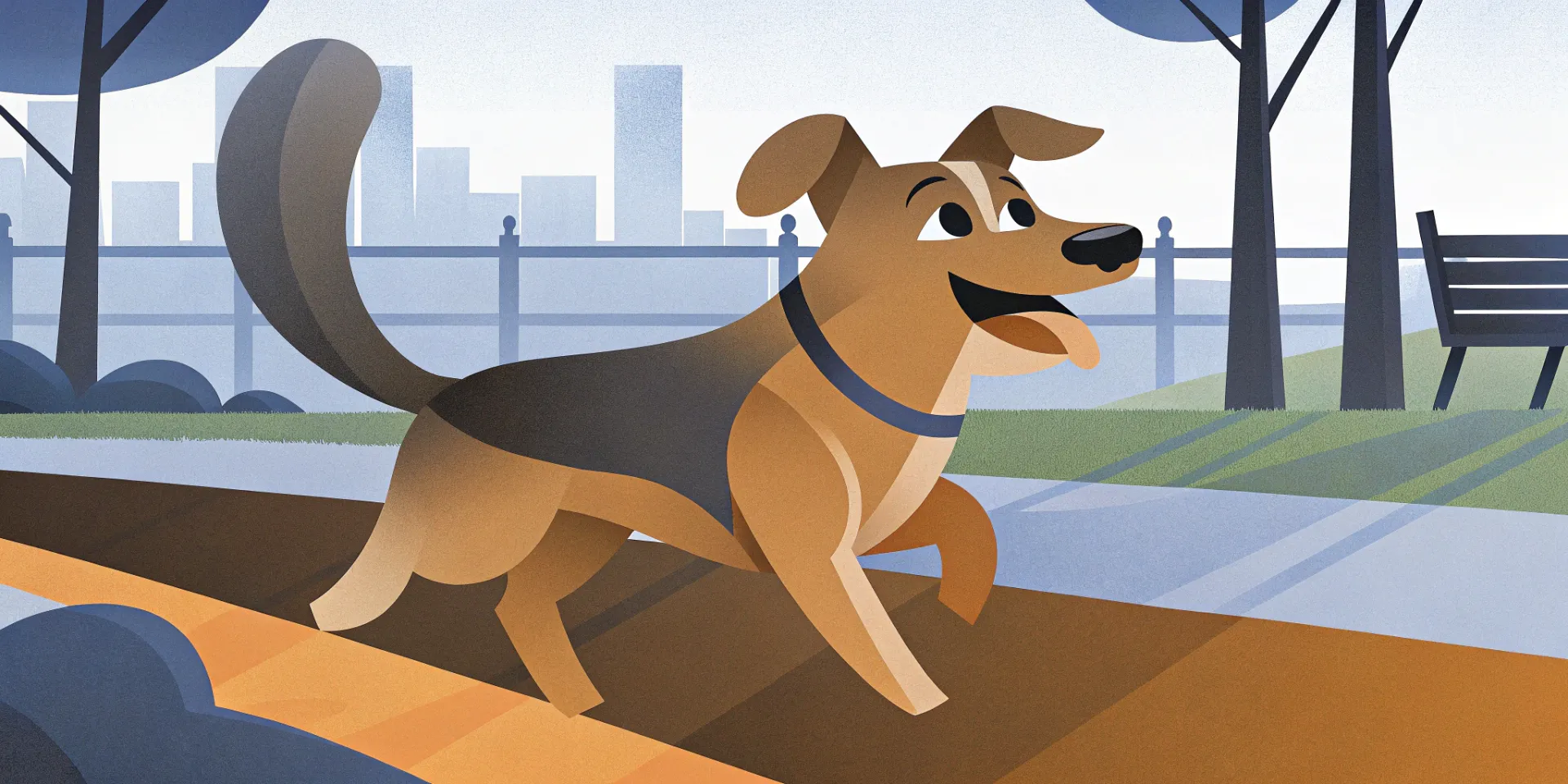
Pet Exercise: Breed & Energy Tailored Plans
Is your dog bored? Tailored **pet exercise** plans boost health & happiness! Learn how breed & energy levels impact their needs.
Consistent Exercise Needs: Tailoring Activity to Breed and Energy Level
As pet owners, we all want the best for our furry companions. We provide them with comfortable beds, nutritious food, and plenty of love. But one aspect of pet care that’s often overlooked, or underestimated, is consistent exercise. It’s not just about burning off excess energy; it’s vital for their physical and mental well-being. Consistent exercise can reduce destructive behaviors and ensure a longer, healthier life for your beloved pet.
 A Golden Retriever joyfully bounds through a park, showcasing the importance of regular physical activity for this high-energy breed.
A Golden Retriever joyfully bounds through a park, showcasing the importance of regular physical activity for this high-energy breed.
Exercise needs vary dramatically from pet to pet, depending on breed, age, health, and individual personality. A daily walk that satisfies a senior Shih Tzu might leave a young Border Collie practically vibrating with pent-up energy. Understanding these differences is crucial for providing the right level of activity for your animal companion.
Understanding Breed-Specific Exercise Needs
Different breeds were developed for different purposes, and those purposes often dictated their activity levels. For example, herding breeds like Border Collies and Australian Shepherds require significant mental and physical stimulation to prevent boredom and destructive behaviors. Sighthounds, such as Greyhounds and Whippets, are sprinters by nature and need opportunities for short bursts of high-speed running.
Toy breeds, while smaller and seemingly less demanding, still need regular exercise. Short walks, indoor playtime, and puzzle toys can help keep them physically and mentally stimulated. In my experience, even the smallest dogs can develop behavioral issues if they don’t get enough opportunities to expend energy.
Consider these common breed categories:
-
High-Energy Breeds: Border Collies, Australian Shepherds, Huskies, German Shepherds, Labrador Retrievers. These breeds generally require at least one to two hours of vigorous exercise daily. Think long walks, runs, fetch, agility training, or canine sports. Understanding Labrador Retriever exercise requirements is crucial for prospective owners!
-
Medium-Energy Breeds: Beagles, Cocker Spaniels, Bulldogs (though watch for breathing issues with brachycephalic breeds), Poodles. These breeds need at least 30 minutes to an hour of moderate exercise each day, such as walks, playtime in the backyard, or short hikes.
-
Low-Energy Breeds: Shih Tzus, Bulldogs (again, be mindful of their breathing), Basset Hounds, Greyhounds (surprisingly, they’re sprinters, not endurance runners). These breeds are content with shorter walks and less intense playtime.
Assessing Your Pet’s Energy Level
While breed provides a general guideline, individual energy levels can vary. Pay close attention to your pet’s behavior to determine if they’re getting enough exercise.
Signs of insufficient exercise include:
- Destructive behavior (chewing, digging, excessive barking)
- Restlessness and hyperactivity
- Excessive weight gain
- Attention-seeking behavior (constant pawing, whining)
- Difficulty settling down or sleeping
Conversely, if your pet is constantly tired or showing signs of pain or stiffness after exercise, you might be overdoing it. Consult with your veterinarian to rule out any underlying health conditions.
 A dog gazes intently at its leash, eager for its daily walk. Recognizing and responding to your pet’s cues is essential.
A dog gazes intently at its leash, eager for its daily walk. Recognizing and responding to your pet’s cues is essential.
Tailoring Exercise to Suit Individual Needs
The best exercise routine is one that’s tailored to your pet’s specific needs and preferences. I believe that variety is key to keeping your pet engaged and preventing boredom. Consider incorporating a mix of:
-
Walking and Running: A brisk walk is a great way to get your pet moving and explore the neighborhood. Adjust the pace and distance to suit their fitness level. Finding the best dog walking routes near you can provide a great change of scenery!
-
Playtime: Fetch, tug-of-war, and frisbee are fun ways to burn energy and strengthen the bond between you and your pet.
-
Puzzle Toys: These toys challenge your pet mentally and physically, keeping them entertained and preventing boredom.
-
Agility Training: Agility courses provide a challenging and rewarding workout for both you and your pet.
-
Swimming: Swimming is a low-impact exercise that’s great for dogs with joint problems.
-
Dog Parks: Supervised playtime with other dogs is a great way for your pet to socialize and burn energy, but be sure that your dog is socialized before going.
Addressing Exercise Needs in Senior Pets
As pets age, their exercise needs will change. Senior pets may not be able to tolerate the same level of activity as younger pets, but they still need regular exercise to maintain their health and mobility.
- Adjust the intensity and duration of exercise. Shorter, more frequent walks may be more appropriate for senior pets.
- Consider low-impact activities like swimming or gentle stretching.
- Consult with your veterinarian to develop an exercise plan that’s safe and effective for your senior pet.
 A senior dog enjoys a gentle sunbath, highlighting the importance of modifying exercise routines to accommodate age-related changes.
A senior dog enjoys a gentle sunbath, highlighting the importance of modifying exercise routines to accommodate age-related changes.
Consistency is Key
Regardless of your pet’s breed or energy level, consistency is crucial. Aim for a regular exercise routine that you can stick to, even on busy days. Even a short walk is better than no walk at all. By understanding your pet’s individual needs and providing them with consistent exercise, you can help them live a happier, healthier, and more fulfilling life. Remember that consistent dog exercise routines are crucial for long-term health!
And don’t forget, exercise is a two-way street! It’s good for you too. So grab that leash, head outside, and enjoy some quality time with your furry friend. You’ll both be glad you did.


